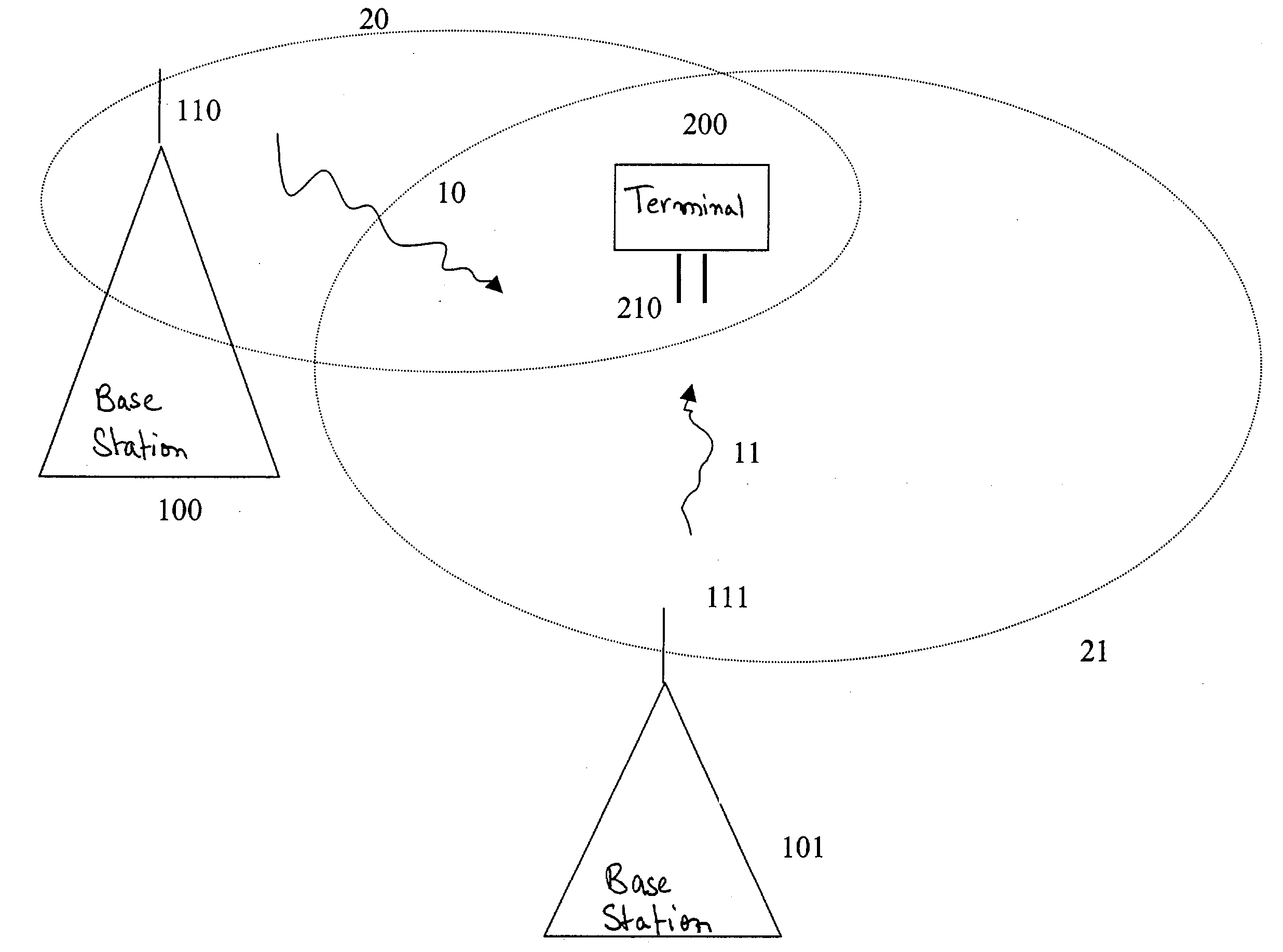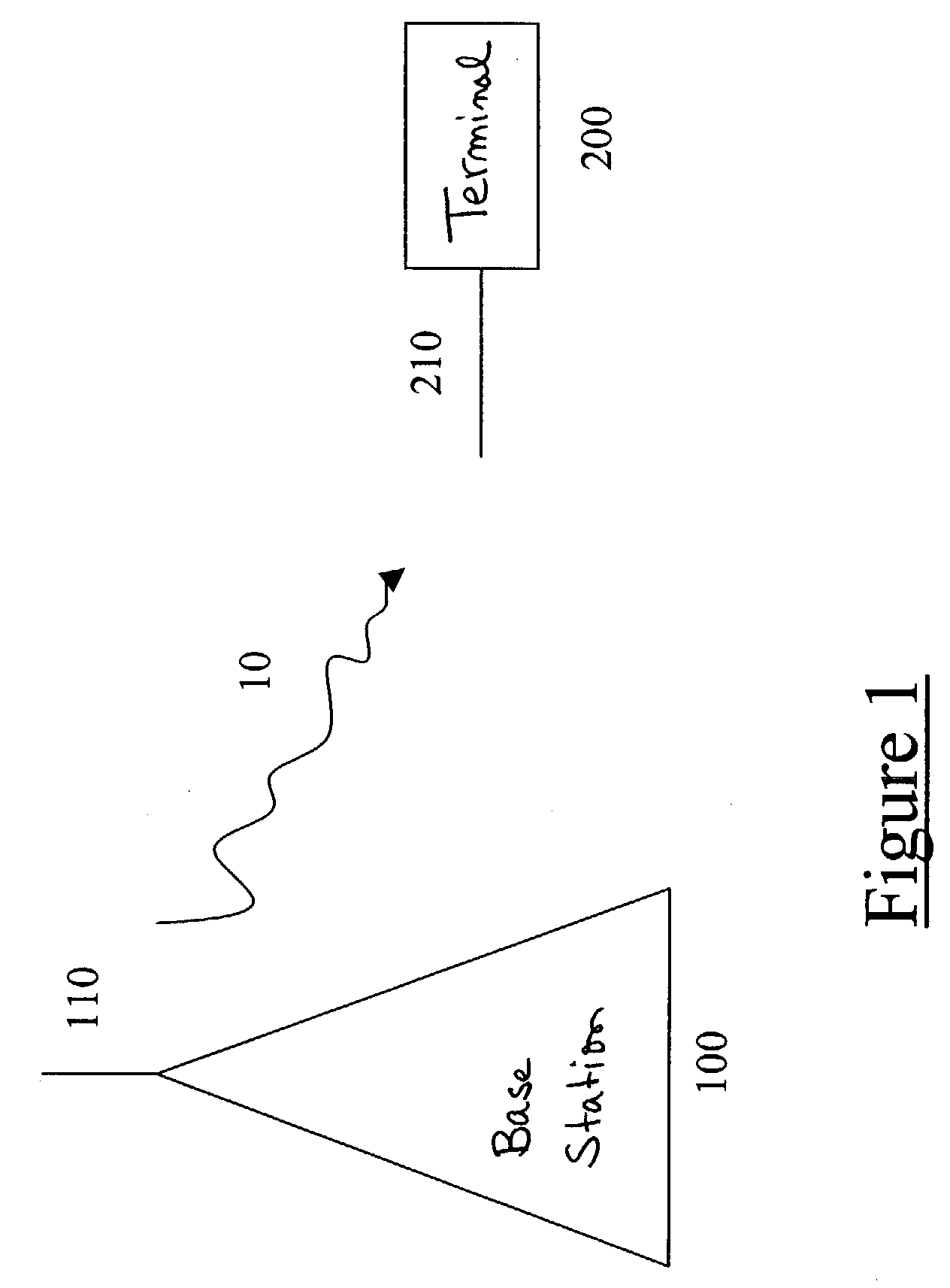CDMA transceiver techniques for wireless communications
a transceiver and wireless communication technology, applied in digital transmission, diversity/multi-antenna systems, phase-modulated carrier systems, etc., can solve problems such as inter-symbol interference, inter-chip interference, and capacity and performance bottlenecks
- Summary
- Abstract
- Description
- Claims
- Application Information
AI Technical Summary
Benefits of technology
Problems solved by technology
Method used
Image
Examples
embodiment
E. Embodiment
E.1 System Model for DS-CDMA Downlink with Spatial Multiplexing
[0304] Let us consider the downlink of a single-cell SM DS-CDMA system with U active mobile stations. We assume that the base station is equipped with M.sub.T transmit antennas whereas the mobile station of interest is equipped with MR receive antennas. As shown in FIG. 27, the base-station transmits from each of its M.sub.T antennas a synchronous code division multiplex, employing the same user specific orthogonal Walsh-Hadamard spreading codes and a different base station specific scrambling code. The multi-user chip sequence, transmitted by the m.sub.t-th transmit antenna, consists of U active user signals and a continuous pilot signal: 53 x m t [ n ] = u = 1 U s m t u[ i ] c m t u[ n ] +s m t p[ i ] c m t p[ n ] ( 99 )
[0305] with i=.left brkt-bot.n / N.right brkt-bot.. Each user's data symbol sequence s.sub.m.sub..sub.t.sup.u[i] (pilot symbol sequence s.sub.m.sub..sub.t.sup.p[i]) is spread by a factor N wi...
PUM
 Login to View More
Login to View More Abstract
Description
Claims
Application Information
 Login to View More
Login to View More - R&D
- Intellectual Property
- Life Sciences
- Materials
- Tech Scout
- Unparalleled Data Quality
- Higher Quality Content
- 60% Fewer Hallucinations
Browse by: Latest US Patents, China's latest patents, Technical Efficacy Thesaurus, Application Domain, Technology Topic, Popular Technical Reports.
© 2025 PatSnap. All rights reserved.Legal|Privacy policy|Modern Slavery Act Transparency Statement|Sitemap|About US| Contact US: help@patsnap.com



